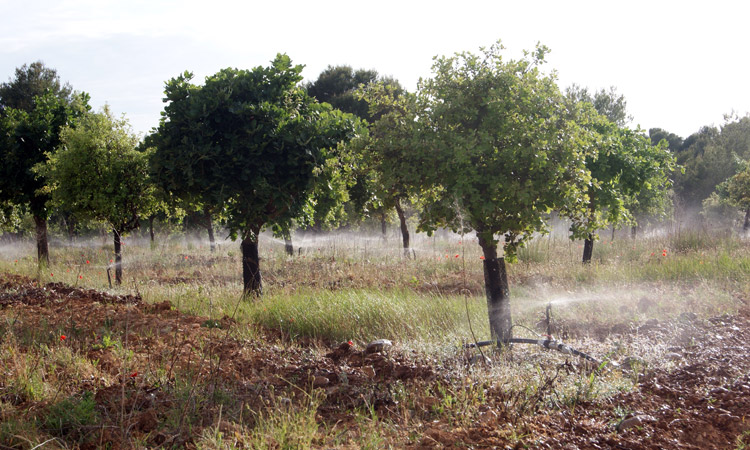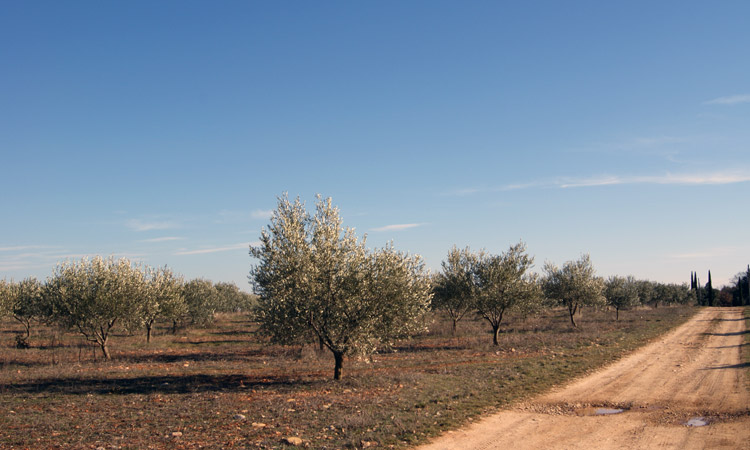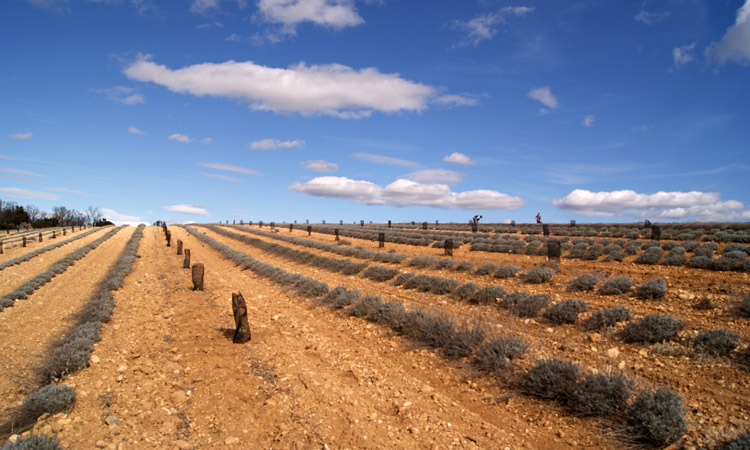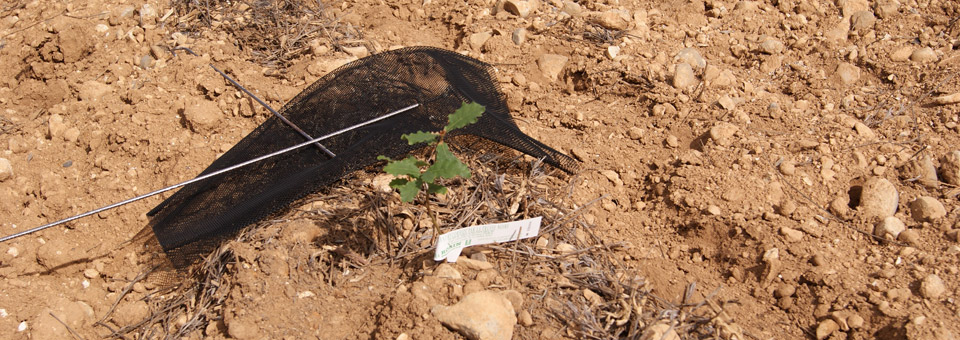The Domain is located in the heart of Provence, close to Moustiers and the Gorges du Verdon, in the Verdon Regional Park.
On the premises we respect the tradition of organic farming which is subject to inspection regularly. We produce lavender, lavendin and hyssop to extract the essential oils. Olive trees are grown on the property from which we produce olive oil with fresh herb flavours. From the apricots that are picked when ripe and sun sweetened we make marvellous jams in copper basins.
Our core activity remains the production of the Black Truffle TUBER MELANOSPORUM that we have been harvesting for 15 years. Over the last 20 last years, we planted 18 hectares of truffle trees and put into place an automatic watering system. If the trees are not watered at the appropriate times, there will not be a regular truffle production. Three consecutive years of poor rain fall would translate to three years without truffles. The entire domain now has an irrigation system in place. The Domain de la Rabasse has the largest truffle production of the department of the Alpes de Haute Provence.



The trees on the property are between 1 and 20 years old. Each year we plant additional white and green oak trees that have been inoculated with TUBER MELANOSPORUM.
The soil has been analysed in a laboratory and the findings conclude that it is conducive to truffle growing. The surrounding region is also prime truffle growing land and our domain has already been growing truffles for 15 years with regular increases in the quantity produced.
On these irrigated parcels we plant between 270 and 300 trees per hectare. This density allows the production to last for at least 20 years if not more. All the trees that are planted are certified by INRA as having been mycorhized by the BLACK TRUFFLE : TUBER MELANOSPORUM. The plants that do not survive or that have difficulty thriving will be replaced free of charge as per the sales conditions (except in the event of force majeur or abandonment of the plantation).
The production starts roughly 7 years after the plantation and increases progressively each year until the trees are about 15 – 18 years old. The production then stabilises and will start to regress.
The harvest is a WEEKLY activity. Sponsors will be notified each week of the quantity and of the quality of truffles harvested. The harvesting of ripe truffles runs from mid December until the end of February. Conducive weather conditions can prolong the season until the middle of March some years. Inversely poor conditions can reduce the harvesting season or produce mediocre quality truffles.
Background
Thanks to the researchers at INRA (Institut National de la Recherche Agronomique) the secrets of the truffle are better known today.
The truffle can now be inoculated into the roots of young trees, most often oaks. This process is known as mycorrhiza which originates from the Greek word myco meaning mushroom and rhiza meaning root. The inoculation takes place in a nursery and allows for a greater and more regular production of truffles in an agricultural setting.

We have worked in collaboration with INRA for 20 years on the improvement of the truffle plants, the techniques of working the soil and pruning. We participate in research on cloning in partnership with a tree nursery and INRA. Numerous experimental plots are installed on the plantation. We have regular visits from researchers of INRA based in Clermont-Ferrand so that they can take note of both our observations and the quantity of truffles harvested.
Despite the scientific knowledge we have, there remains an element of mystery in the production of truffles. Much like wine production, consecutive years do not resemble one another. Some years are exceptional in terms of quantity and quality while others are less so. Climatic variations like extreme freezing temperatures in winter or prolonged periods of heat during the summer will have an impact on the harvest. This is why the Black Truffle remains a rare and exceptional product.
